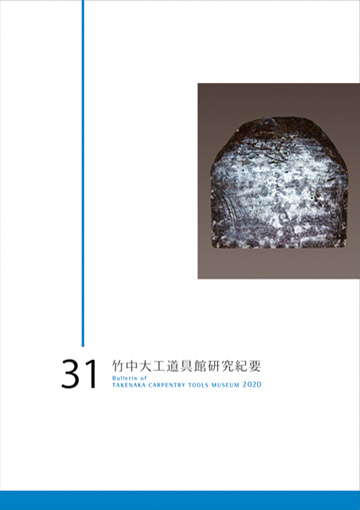A survey was conducted in July 2014 on the carpentry tools used in the province of Shanxi, China, in attempt to investigate and compare with the 2013 survey results on the carpentry tools used at the Maintenance Center of the Palace Museum. This survey focuses on the tools used by the carpenters (10 people) who were working at the repair (or restoration) sites of historical buildings in Shanxi. This article reports the following 4 main discoveries from the Shanxi survey:
1. The standard set of carpentry tools used in Shanxi contains 31~50 types of tools, which differs among different carpenters. Fewer tools were used in Shanxi than at the Maintenance Center of the Palace Museum (54 types); however, it contains the main tools like saws, planes and chisels.
2. The standard set of carpentry tools contains many kinds of molding planes; therefore it can be concluded that their work includes making doors and windows. There is no clear distinction between the carpentry work and the joinery work in Shanxi. On the other hand, the carpentry work and the joinery work were clearly separated at the Palace Museum.
3. Carpenters from different areas use tools with different features. The tools of Ben is a typical example. Their Bens have different features and are used in various ways.
4. Out of the 10 carpenters surveyed, three carpenters’ tools were examined in greater details. It is found that they have different tools from one another. This may be resulted of being local areas’ carpenters, the carpenters in Shanxi take a wide variety of jobs, and they often do not know what and where their next projects would be.
View full abstract
